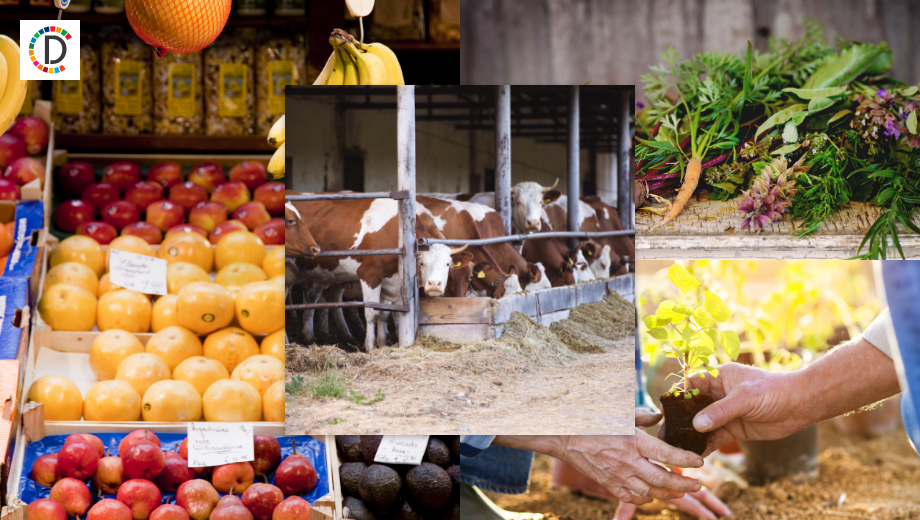Cattle Menace: A Pressing Issue for Farmers in Western Uttar Pradesh
I was once hit on the back and was hospitalised for a week, says Keshav Kumar, a farm worker in Pilkhana village in Uttar Pradeshs Hathras.Besides, he said, he has been chased by cows and Nilgai multiple times.Dharmendra Singh, a farmer, in Firozabads Akilabad village, says, I lost 30 per cent of my produce due to stray cattle entering my field.

- Country:
- India
''When I come to work in the fields in the morning, stray cattle are standing there, ready to attack. I was once hit on the back and was hospitalised for a week,'' says Keshav Kumar, a farm worker in Pilkhana village in Uttar Pradesh's Hathras.
Besides, he said, he has been chased by cows and Nilgai multiple times.
Dharmendra Singh, a farmer, in Firozabad's Akilabad village, says, ''I lost 30 per cent of my produce due to stray cattle entering my field. There is drought, unseasonal rain and now this stray cattle menace. What are we supposed to do?'' Instances like these are not uncommon in western Uttar Pradesh and encapsulate the stray cattle menace that farmers have been struggling with for several years now.
The problem, exacerbated by recent policy changes, has emerged as a major issue in western Uttar Pradesh in the ongoing Lok Sabha elections.
The importance of the issue can be gauged from the fact that it is the sole deciding factor for some.
''I voted for 'phool' (referring to the BJP's party symbol lotus) in the last two general elections thinking that this problem would be solved. As the problem remained unresolved, I didn't vote for them in the assembly polls and plan to vote for the SP this time,'' Kumar said.
In villages across western Uttar Pradesh, the sight of emaciated stray cattle roaming around has become all too common and so is the sight of destroyed crops. When they can't enter fields, many cows feed on plastic and garbage.
Farmers are also upset over the state government's decision to reinforce an old order that no barbed wires should be used to fence fields. Now, most farmers use plain wires or saris and dupattas to fence fields.
''They are of no use. We don't understand why the government cannot understand our losses,'' said Akilabad farmer Singh.
According to the 2019 Livestock Census, there are over 1.90 crore cattle in Uttar Pradesh, including 62,04,304 milch cows and 23,36,151 dry cows.
The indigenous female cattle population increased by 10 per cent in 2019 compared to the previous census in 2012. The population of exotic and cross-bred cattle increased by 26.9 per cent from 2012 to 2019.
The stray cattle menace has also added to farmers' economic woes as they do not know what to do with cows that have stopped giving milk.
''Earlier, we would give the old cow in exchange for 10-20 per cent of the down payment and get a new one. But with the new policy, even that is not possible. We have no option but to either sell them illegally or abandon them,'' said a farmer who did not wish to be named.
In May 2017, the Centre banned the sale of cattle for slaughter in animal markets across the country.
The environment ministry notified the stringent 'Prevention of Cruelty to Animals (Regulation of Livestock Markets) Rules, 2017' under the Prevention of Cruelty to Animals Act.
Every village in western Uttar Pradesh has a cow shelter but they are at capacity.
(This story has not been edited by Devdiscourse staff and is auto-generated from a syndicated feed.)
ALSO READ
ED raids 10 premises of Tulsiani Constructions and Developers in Uttar Pradesh
Congress releases list of 40 star campaigners for Uttar Pradesh polls
SP did not find any Yadav outside ''family'' to give tickets in Budaun, Mainpuri, Firozabad, Azamgarh, Kannauj: PM Modi at Bareilly rally.
SP supremo Akhilesh Yadav, leading the charge for the Samajwadi Party in the Lok Sabha polls, today filed his nomination from the party stronghold Kannauj in Uttar Pradesh.
Early Voting Surge: Over 11% Cast Ballots in Uttar Pradesh Constituencies










